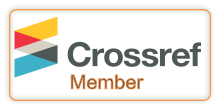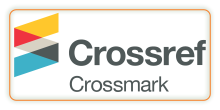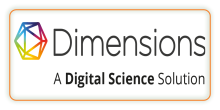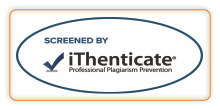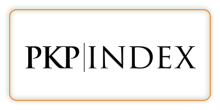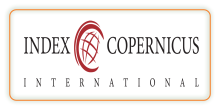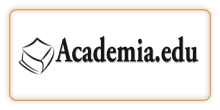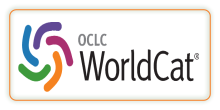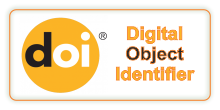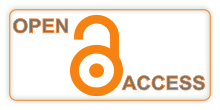OCCUPATIONAL STRESS LEVEL AMONG CLEANLINESS WORKERS OF INDORE MUNICIPAL CORPORATION ACROSS DIFFERENT GRADES.
DOI:
https://doi.org/10.29121/granthaalayah.v13.i4.2025.6147Abstract [English]
The Quantitative study investigates the significant difference in occupational stress among cleanliness workers of Indore Municipal Corporation across different grades. Administering a survey by opting a occupational stress index developed by Dr. A K Shrivastava and Dr. Ashok Pratap Singh specifically for this research. The Null Hypothesis (H₀1) states that There is no significant difference in occupational stress among cleanliness workers of Indore Municipal Corporation across different grades. We measured the occupational stress levels among 384 cleanliness workers of Indore Municipal Corporation during the cleanliness drive.
The assumption checks indicate that the normality assumption for Occupational Stress is violated, as evidenced by the Shapiro-Wilk test (W = 0.938, p < .001), suggesting that the data significantly deviates from a normal distribution. Additionally, Levene’s test for homogeneity of variances (F(3, 377) = 29.3, p < .001) reveals a significant violation, indicating unequal variances across groups.
The results of Welch’s One-Way ANOVA indicate a statistically significant difference in Occupational Stress among cleanliness workers across different grades, F(3, 113) = 46.9, p < .001. Given that Welch’s ANOVA is robust to violations of normality and homogeneity of variances, this result confirms that at least one group differs significantly from the others. Since the p-value is less than .05, we reject the null hypothesis, which states that there is no significant difference in occupational stress among cleanliness workers across different grades. This suggests that occupational stress levels vary significantly among the different grades of workers. To further examine which specific groups differ, a post hoc analysis such as Games-Howell should be conducted. Let me know if you need help with post hoc comparisons or further interpretation.
The Tukey post-hoc test results indicate significant differences in occupational stress among different grades of cleanliness workers. Specifically, Grade-I workers experience significantly different levels of occupational stress compared to Grades II, III, and IV (p < .001 for all comparisons). However, no significant differences are observed among Grades II, III, and IV, as their p-values are above 0.05. Since Welch’s ANOVA indicated a significant overall difference, the post-hoc results help identify where these differences exist. The significant differences between Grade-I and the other three grades suggest that occupational stress is notably higher or lower in Grade-I compared to the rest. However, the non-significant comparisons among Grades II, III, and IV imply that their stress levels are relatively similar.
Thus, the null hypothesis ("There is no significant difference in occupational stress among cleanliness workers across different grades") is partially rejected, as significant differences exist between Grade-I and other grades, but not among Grades II, III, and IV.
Downloads
References
Asplund, S. (2022). Work-Related Stress Among Municipal Employees in Rural Northern Sweden (Doctoral dissertation, Umeå University). DOI: https://doi.org/10.1080/17482631.2022.2056957
Dos Santos, M. (2015). Unemployment, Mental Health Worker and Suicide: a Systematic Review. European Psychiatry, 30. https://doi.org/10.1016/s0924-9338(15)30295-9 DOI: https://doi.org/10.1016/S0924-9338(15)30295-9
Goncharuk, A., Knezevic, B., & Marcinko, D. (2023). “How Well Mental Health Workers Are Motivated: A Case Study From Croatia.” Problems and Perspectives in Management, 21(1). https://doi.org/10.21511/ppm.21(1).2023.30 DOI: https://doi.org/10.21511/ppm.21(1).2023.30
International Labour Organization. (2017). Occupational Health and Safety.
Joshi, B., Acharya, R., Khan, T., & Thomas, S. (2021). A Study on Effectiveness of Positive Thinking Intervention on Reduction of Students’ Mental Health and its Component During Online Classes at Undergraduate Level. BSSS Journal of Education, 10(1), 36–41. https://doi.org/10.51767/je1004 DOI: https://doi.org/10.51767/je1004
Khan, T., Saluja, V. K., & Basu, S. (2023). Building Psychological Wellbeing Through Story Reading In Literature Undergraduates: An Intervention Outcome. Human Research in Rehabilitation, 13(2). https://doi.org/10.21554/hrr.092313 DOI: https://doi.org/10.21554/hrr.092313
Lourenção, L. G., Sodré, P. C., Gazetta, C. E., Silva, A. G. D., Castro, J. R., & Maniglia, J. V. (2022). Occupational Stress and Work Engagement Among Primary Healthcare Physicians: A Cross-Sectional Study. Sao Paulo Medical Journal, 140, 747-754. https://doi.org/10.1590/1516-3180.2021.0644.r1.10012022 DOI: https://doi.org/10.1590/1516-3180.2021.0644.r1.10012022
Oza, H. H., Lee, M. G., Boisson, S., Pega, F., Medlicott, K., & Clasen, T. (2022). Occupational Health Outcomes Among Sanitation Workers: A Systematic Review and Meta-Analysis. International Journal of Environmental Health and Hygiene, 240. https://doi.org/10.1016/j.ijheh.2022.113908 DOI: https://doi.org/10.1016/j.ijheh.2021.113907
Rapisarda, F., Vallarino, M., Brousseau-Paradis, C., De Benedictis, L., Corbière, M., Villotti, P., Cavallini, E., Briand, C., Cailhol, L., & Lesage, A. (2022). Workplace Factors, Burnout Signs, and Clinical Mental Health Symptoms among Mental Health Workers in Lombardy and Quebec during the First Wave of COVID-19. International Journal of Environmental Research and Public Health, 19(7). https://doi.org/10.3390/ijerph19073806 DOI: https://doi.org/10.3390/ijerph19073806
Published
How to Cite
Issue
Section
License
Copyright (c) 2025 Ali Asgar Husaini, Dr. Bharti Joshi

This work is licensed under a Creative Commons Attribution 4.0 International License.
With the licence CC-BY, authors retain the copyright, allowing anyone to download, reuse, re-print, modify, distribute, and/or copy their contribution. The work must be properly attributed to its author.
It is not necessary to ask for further permission from the author or journal board.
This journal provides immediate open access to its content on the principle that making research freely available to the public supports a greater global exchange of knowledge.












